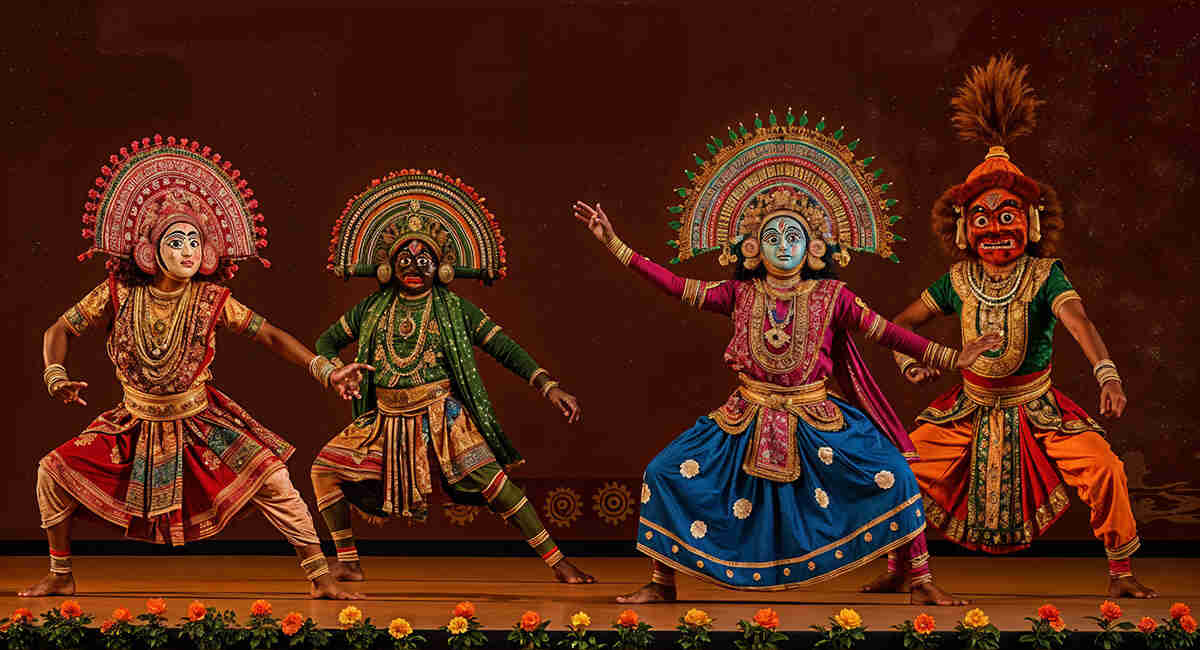Chhau Mahotsav: A Colorful Celebration of Odisha’s Dance Tradition
India is a land of huge cultural diversity, and each state brings something unique to the table—whether it be in language, attire, food, or art. Located on India’s eastern coast, the state of Odisha is famous for its rich cultural past, enduring traditions, and traditional artistic expressions. Among its many artistic treasures, Chhau dance stands out for its combination of drama, energy, and expression. Celebrated with great enthusiasm and pride, the Chhau Mahotsav is a vibrant annual festival that showcases and preserves this dynamic dance form.
Let’s take a closer look at what makes Chhau Mahotsav so special—how people celebrate it, the cultural significance it holds, and why art lovers and travelers must experience this vibrant event.
What Is Chhau Dance?
Before diving into the festival, it’s essential to understand what Chhau dance is. Chhau is a traditional Indian dance form that blends martial arts, folk traditions, and storytelling into a single, expressive performance. It is popular in the eastern Indian states of Odisha, Jharkhand, and West Bengal. Over time, Chhau has evolved into three distinctive styles based on its region of origin:
- Mayurbhanj Chhau (Odisha) — Performed without masks, this style emphasizes facial expressions and body language.
- Seraikella Chhau (Jharkhand) — Uses decorative masks to represent characters and emotions.
- Purulia Chhau (West Bengal) — Also mask-based, often more theatrical and colorful in nature.
Of these, Mayurbhanj Chhau is the most renowned in Odisha and takes center stage during the Chhau Mahotsav. UNESCO has designated Chhau dance—an embodiment of Eastern India’s rich cultural heritage—as an Intangible Cultural Heritage of Humanity.
Storytelling Through Dance
One of the most captivating aspects of Chhau is its non-verbal storytelling. Dancers enact stories from Indian mythology, such as episodes from the Ramayana and Mahabharata, as well as tribal legends, folk tales, and nature-based themes. The performances are intense and powerful, featuring acrobatic moves, swift footwork, and rhythmic patterns, all set to traditional music.
In Mayurbhanj Chhau, without the use of masks, performers rely heavily on their facial expressions, gestures, and movements to convey emotions, characters, and stories. In contrast, the masked styles use elaborate headgear and costumes, where even the design of the mask communicates personality traits and moods.
What Is Chhau Mahotsav?
Chhau Mahotsav is an annual cultural festival that honors and showcases the Chhau dance tradition. Typically celebrated in April or May, the festival is hosted across various regions of Odisha, with the Mayurbhanj district, particularly Baripada, being the epicenter of the grand celebration.
This festival is not just a platform for entertainment—it plays a crucial role in promoting folk arts, supporting local artists, and educating the next generation about their cultural roots.
Key Objectives of the Festival:
- Celebrate and promote Chhau dance and its performers.
- Preserve and pass on Odisha’s folk and tribal heritage.
- Foster awareness and appreciation of Indian folk arts.
- Inspire youth to learn and participate in traditional art forms.
Where Is It Celebrated?
People celebrate Chhau Mahotsav across various parts of Odisha, but Baripada in Mayurbhanj district remains the heart and soul of the event. Known for its strong tribal influence and artistic heritage, Baripada transforms into a cultural hub during the festival. Locals, national visitors, and international tourists gather here to witness the magic of Chhau in its most authentic form.
What Happens During Chhau Mahotsav?
The Mahotsav usually spans three to five days, depending on the scale and location. Each day offers a dynamic mix of art, education, and celebration through a series of engaging events.
- Grand Dance Performances: Every evening, various Chhau dance troupes take to the stage to perform meticulously choreographed routines. Each performance tells a different story, depicting divine battles, mythological heroes, demonic villains, or natural elements such as animals, seasons, and forests. The dancers wear colorful costumes, and their dramatic storytelling leaves the audience mesmerized.
- Traditional Folk Music: The music is an essential part of Chhau performances. Instruments such as the dhol (a double-sided drum), nagara (a kettledrum), shehnai, and mohuri create a high-energy atmosphere that drives the dance. The pulsating rhythms not only elevate the performance but also reflect the rustic charm of Odisha’s tribal communities.
- Workshops and Training: Chhau Mahotsav isn’t just about watching—it’s also about learning. The festival often includes workshops for students, art enthusiasts, and young performers. Experts lead sessions on dance techniques, mask-making, music, and costume design, actively passing down knowledge through generations.
- Cultural Exhibitions: Artisans set up craft stalls selling handmade Chhau masks, tribal jewelry, textiles, and local food. This enhances the overall experience, enabling visitors to explore the broader spectrum of Odisha’s cultural richness.
Final Thoughts
Chhau Mahotsav is more than just a festival—it’s a celebration of heritage, identity, and the timeless power of storytelling through dance. This event offers a look into the heart of Odisha, whether you’re an artist, tourist, cultural enthusiast, or simply interested in India’s remarkable diversity.
It’s a chance to celebrate traditions, uplift local talent, and enjoy unforgettable performances that transcend language and speak straight to the heart. So, the next time you’re planning a trip to Odisha, don’t forget to add Chhau Mahotsav to your itinerary—you’ll come back inspired, amazed, and deeply moved.


